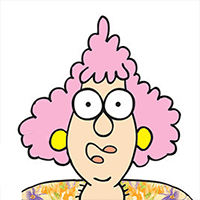The Evolution of Designers Clothes: A Look Back Over the Decades
Published in Entertainment Articles
Did you know that the luxury apparel market is expected to reach $151.32 billion by 2029? This shows how resilient the luxury market is, even in changing economic conditions.
Fashion is more than just clothing. It’s a form of art, a historical record, and a reflection of cultural shifts. For over a century, designers clothes have stood at the forefront of this dynamic landscape. From Parisian ateliers to high-street boutiques, designer fashion has continuously evolved.
This blog post explores the fascinating evolution of designer clothing over the decades. Read on to learn more.
The 1950s: Post-War Optimism and Femininity
The 1950s marked a significant shift towards femininity and elegance in clothes. The post-war era brought about a sense of optimism and prosperity. It’s reflected in the lavish designs of couturiers like Christian Dior.
His “New Look,” captured the essence of femininity. This decade also saw increasing popularity of youth-oriented styles.
Brands began to recognize the importance of catering to younger audiences. This led to a more diverse fashion landscape.
The 1970s: A Blend of Styles
The 1970s celebrated diversity in runway clothing. It blended bohemian, punk, and disco influences. It was an era of self-expression where fashion became synonymous with personal identity.
Designers like Halston and Vivienne Westwood played crucial roles in shaping the decade’s style. It also introduced fabrics like polyester and techniques that embraced comfort.
The rise of fast fashion also emerged during this time. This made stylish clothing accessible to the masses.
The 1980s: Glamour and Excess
The 1980s were defined by excess, bold colors, and extravagant silhouettes. Designers such as Gianni Versace and Vivienne Westwood brought theater to fashion.
The idea of power dressing emerged. Sharp blazers and shoulder pads became symbols of businesswomen’s empowerment.
This decade also emphasized the influence of media in fashion. Celebrities and musicians began to shape trends on a global scale.
The 1990s: Minimalism and Streetwear
The 1990s showcased a contrasting approach to runway fashion with the rise of minimalism and street style. Designers like Calvin Klein popularized clean lines and understated aesthetics. This signified a departure from the excess of the previous decade.
Simultaneously, the emergence of grunge and hip-hop styles cultivated a more casual approach. Brands like Supreme and Stüssy made streetwear a fashion staple, merging comfort with style.
The 2000s: Eclecticism and Global Influence
As we entered the 2000s, fashion became increasingly eclectic. It draws inspiration from various cultures and subcultures.
Designers like Alexander McQueen and Jean-Paul Gaultier experimented with form and color. This era introduced fast fashion’s rapid production cycle. It significantly altered consumer behavior.
To help you choose your clothing, you might want to shop acne studios. They offer a unique blend of functionality with artistic flair. They offer a diverse range of goods that span various categories within the fashion industry.
From Past to Present: The Enduring Legacy of Designers Clothes
The evolution of designers clothes reflects societal changes, cultural shifts, and technological advancements. Understanding this history helps you appreciate the craftsmanship behind current collections.
As each decade leaves its mark, it’s clear that fashion will continue to evolve. It will continue to blend past inspirations with innovative ideas.
For more informative articles, check out the rest of our website!












Comments